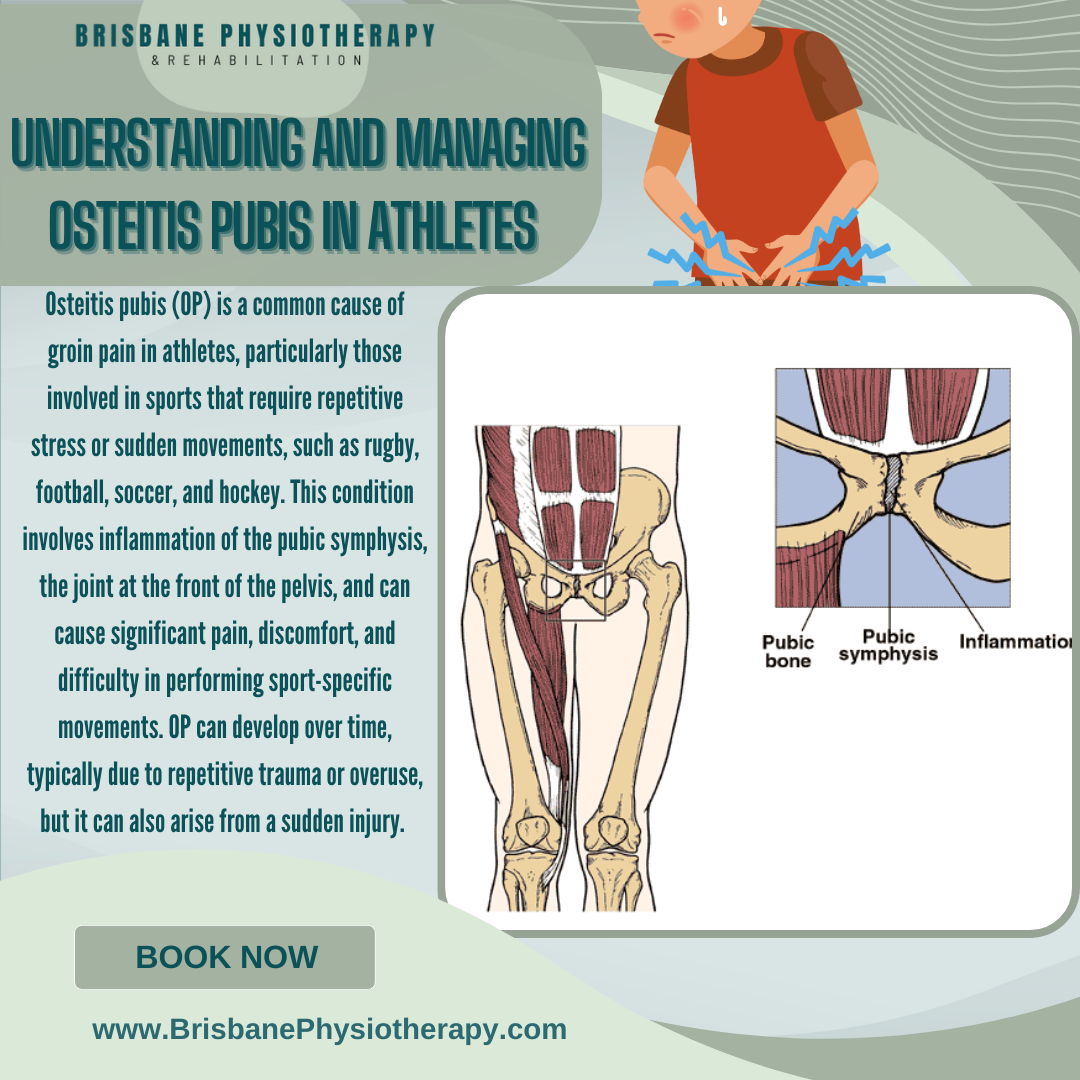Physiotherapy Guide: Understanding and Managing Osteitis Pubis in Athletes
Osteitis pubis (OP) is a common cause of groin pain in athletes, particularly those involved in sports that require repetitive stress or sudden movements, such as rugby, football, soccer, and hockey. This condition involves inflammation of the pubic symphysis, the joint at the front of the pelvis, and can cause significant pain, discomfort, and difficulty in performing sport-specific movements. OP can develop over time, typically due to repetitive trauma or overuse, but it can also arise from a sudden injury.
Incidence
Research indicates that OP is more prevalent in men than women. Studies have found that OP occurs 2 to 5 times more frequently in men. In male soccer players, OP accounts for 10% to 18% of all injuries annually.
Osteitis pubis makes up about 5-10% of all groin injuries in athletes. While adductor muscle strains are more common, OP is a leading cause of chronic groin pain, particularly in sports like rugby, football, and soccer. Groin injuries overall account for up to 20% of all sports injuries, but OP’s long-term nature means it can often cause more prolonged issues if not treated properly.
Physiotherapy for Osteitis Pubis
Physiotherapy is essential in managing OP, aiming to reduce pain, restore mobility, and prevent recurrence. Treatment typically includes:
Pain Management: Using ice, compression, and soft tissue techniques to alleviate pain and reduce inflammation.
Restoring Mobility: Implementing stretching and mobilisation exercises to improve flexibility in the hip, pelvis, and lower back.
Strengthening: Focusing on exercises that target the adductors, hip flexors, and core muscles to stabilise the pelvis and prevent further strain.
Sport-Specific Rehabilitation: Incorporating exercises that mimic sport-specific movements to facilitate a safe return to activity.
Injury Prevention: Providing education on biomechanics, warm-up routines, strengthening and mobility exercises to minimise the risk of future injuries.
Physiotherapist Tip
The use of a groin strap can significantly de-load the structures contributing to groin pain and can be used to reduce the symptoms of Osteitis Pubis.
Conclusion
Osteitis pubis poses a significant challenge for athletes. However, with appropriate physiotherapy interventions, individuals can effectively manage the condition and return to their respective sports. A comprehensive approach encompassing pain management, rehabilitation, and preventive strategies is crucial for optimal recovery and performance.

